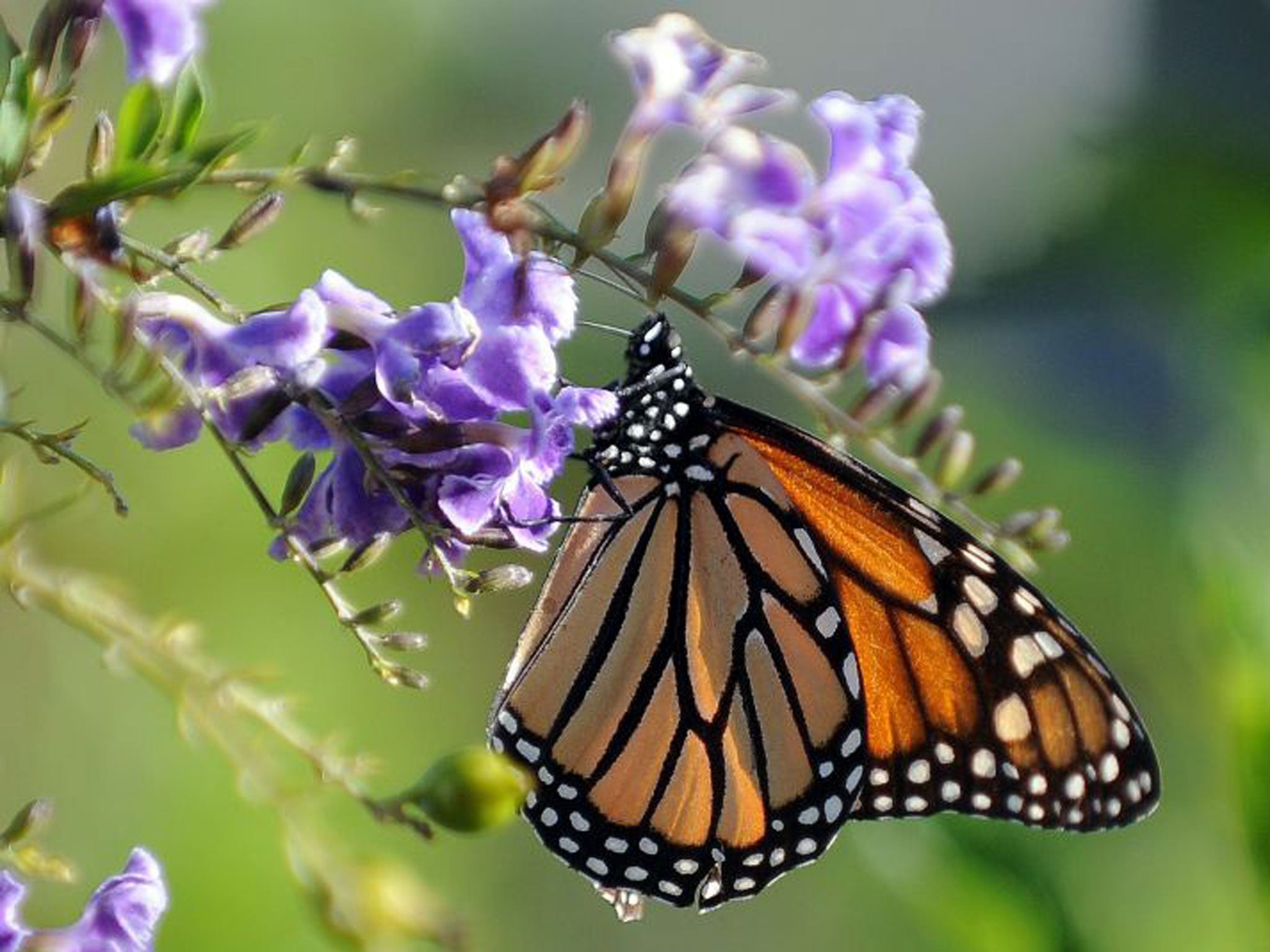Nature Studies: Cross the Atlantic in a ship? The beautiful Monarch can do better than that
To a British enthusiast, it's a once-in-a-lifetime encounter. Oxford don Professor EB Ford caught sight of one in 1941 and set off in frenzied pursuit.

Britain is pretty poorly off for butterflies, all things considered, with a measly 58 breeding species: cross the Channel and you’ll find nearly five times as many. So something that sets your average British butterfly-lover’s heart a-thumping is the occasional chance meeting with a rare migrant from elsewhere.
The Camberwell beauty, from the Nordic countries, with its maroon wings bordered with cream, is a quite stunning one, while very handsome, too, is the Queen of Spain fritillary from France; but the greatest prize is almost certainly the monarch, for anyone who sees one in Britain is witnessing something extraordinary: an insect which has just flown the Atlantic.
Huge and spectacular, bright orange boldly cross-striped with black, the monarch is America’s most celebrated butterfly, and its occurrence here, nearly always in the South-west in the autumn, seems to be increasing, with relatively large numbers arriving in some years: in 1999, there were up to 300.
To a British butterfly enthusiast, it’s a once-in-a-lifetime encounter, and the excitement was never better described than by the leading lepidopterist of the 20th century, the eccentric Oxford don Professor EB Ford, who on 30 August 1941 caught sight of a monarch at Kynance Cove in Cornwall and set off after it in frenzied pursuit. (You can read the full story on pp159-160 of Ford’s Butterflies, Volume One in the celebrated Collins New Naturalist Series. Although he doesn’t say so, I cannot help but picture him pursuing his quarry in a Tweed suit, with a fob watch attached to his waistcoat.)
Ford thought that monarchs might cross the Atlantic on ships, and although this is possible, in the past half-century it has become clear that they do, indeed, make it across the featureless ocean under their own steam, if the westerlies are favourable. But that should not surprise us, for the monarch’s intended, rather than accidental, American migration, is one of the real wonders of the natural world.
Every autumn, tens of millions of monarchs, perhaps hundreds of millions, set out from the northern US to fly south for the winter, in two great streams, one on either side of the Rockies. The western stream ends up in southern Califonia, but the eastern stream flies nearly 2,500 miles to the Sierra Madre in central Mexico, where the whole lot of them – and there are some suggestions that they may number a billion – roost in just a few acres of mountain pine forest, a location only discovered in 1975.
They cover the trees, they cover the ground, they cover the people who come to gaze on them; when they take flight they shut out the sun. And then in the springtime, they do the journey in reverse, heading back north to the US.
Since the discovery of the wintering site, several films have been made of this marvel, and now a new one is on the cards, from a Mexican-American film-maker based in London, Ali Alvarez. But unlike the previous nature documentaries, Ms Alvarez’s film. The Journey, will concern itself with people: the people the butterflies come into contact with on their odysseys.
There seem to be a number of stories, she says, “of these butterflies showing up in moments of tragedy and loss”, and of them representing “a sign of beauty and hope for people who had just experienced something really sad”. Far-fetched? Whimsical? Perhaps. But you can judge for yourself on the five-minute short that Ms Alavarez has made to try to crowd-source funds for the project. She needs to raise £80,000 by 3 June; so far, she has raised just under £30,000 from 132 backers. You can see the film (for free) here.
Personally, I found it to be charm itself: it is exquisitely made, and whether you wish to back her or not, watch it and you will get a vivid feel for the monarch migration and its truly wondrous nature.
Join our commenting forum
Join thought-provoking conversations, follow other Independent readers and see their replies
Comments